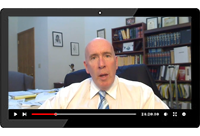According to the National Highway Traffic Safety Association (NHTSA), making a left hand turn is one of the leading causes of car accidents in the country. Stats collected by the NHTSA and other groups have determined that left turn accidents occur in approximately 22% of collisions and are three times as likely to kill pedestrians as right turns.
Left hand turns are significantly more dangerous because they involve multiple lanes of traffic moving in different directions. The driver making the turn is required to make judgment calls when it comes to the speed and distance of oncoming cars as well as the length of time remaining on green or yellow traffic lights.
The most common reasons for left turn collisions include:
- Obstructed view while making the turn
- Driving into blind spots
- Misjudging the speed of oncoming cars
- Miscalculating the distance across the intersection
- Illegal maneuvers, including failure to signal or yield to right-of-way
Victims of these types of accidents are more likely to sustain a serious injury from a head-on or t-bone collision. Broken bones, neck and head injuries, and spinal cord injuries, as well as traumatic brain injuries, are commonly associated with left-turn accidents.
In California, the law states that a driver attempting to make a left turn must yield the right of way to oncoming vehicles and ensure that they have adequate space to make the full turn without interrupting the traffic’s flow.
Because of this, the driver making the left hand turn is typically found to be at fault for the accident. However, there are several exceptions to this.
Who is at fault?
While the driver making the left turn is usually found to be at fault, there may be evidence such as pictures, details from the police report, or eyewitnesses, that places the fault on the other drivers, including:
- The car traveling straight through the intersection was speeding, ran a red light or stop sign
- The other driver was operating their vehicle illegally or while distracted
- The other driver was under the influence of alcohol or drugs when the accident happened
- An unforeseen circumstance, such as an animal that has run into the road forcing the driver to slow down or stop, mid-turn
Making the right decisions
Some tips that can help you avoid left turn car accidents include:
- Yield the right of way to traffic
- Make sure there are no obstacles in your path such as pedestrians, bikes, or other vehicles
- Signal your intent to turn a minimum of 150 feet in advance of the turn
- Be very cautious
If you or a loved one have been the victim of a left turn accident and have sustained an injury, you may be able to receive compensation for any injuries and/or damage to your property.
Contact the Law Offices of Robert F. Brennan, APC, car accident attorney in Los Angeles. With 33 years of practice, Robert F. Brennan has tried or settled several large personal injury cases.



